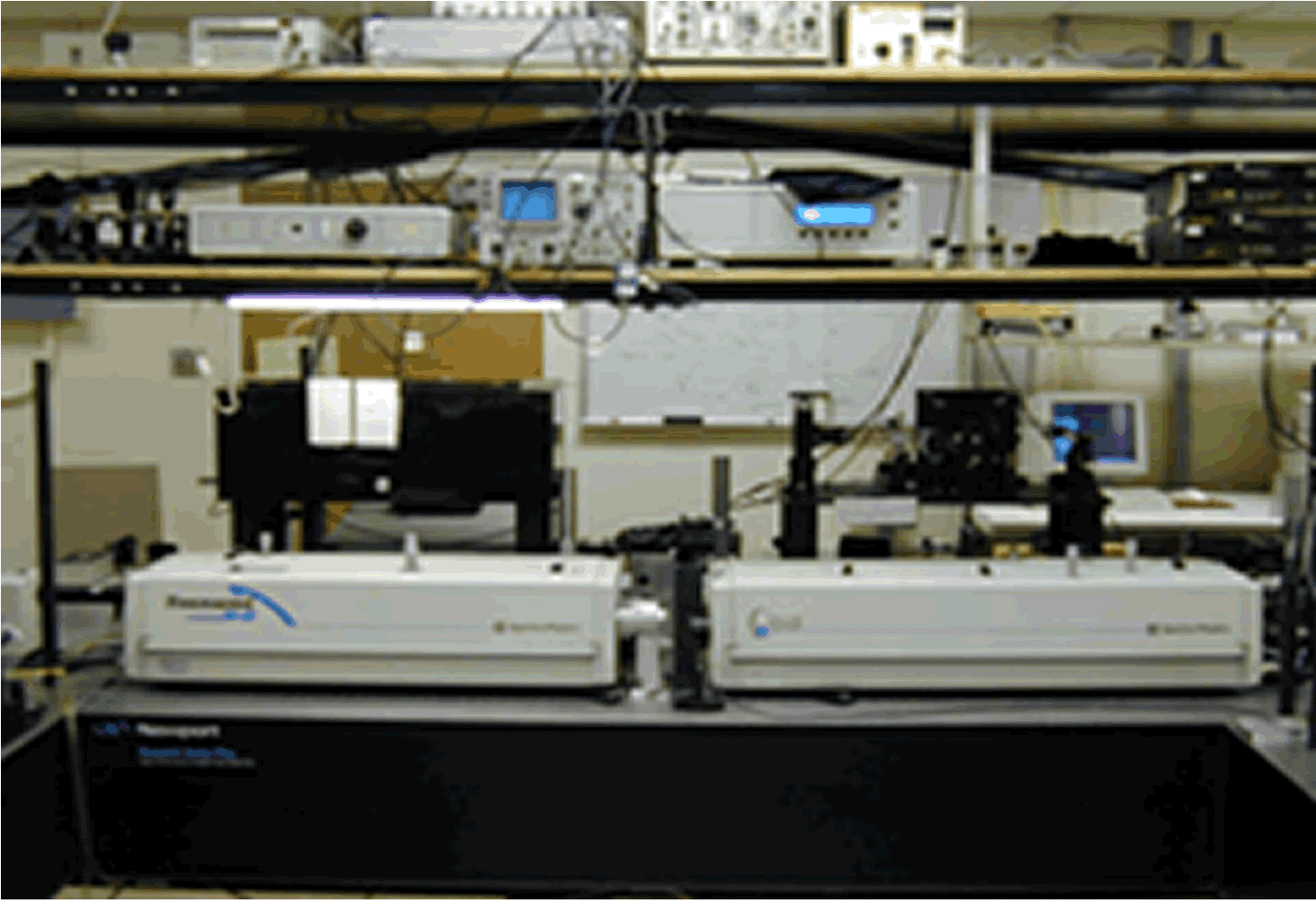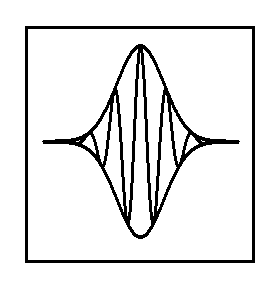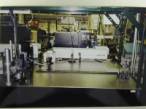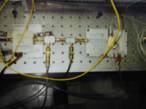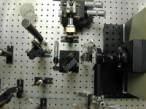|
|
||
|
The Nonlinear
and Ultrafast Fiber Optics Laboratory specialize in nonlinear optics and
photonic crystal fibers, and their use for infrared frequency metrology. Our
research endeavors include fiber laser based frequency combs, gas-filled
hollow core photonic crystal fiber lasers, photonic microcell optical
frequency references, and modelocked Tm/Ho doped fiber lasers. My
publication list can be found here.
My past research can be found here. Agro-combs:
Development of a mid-infrared dual-comb spectrometer for the detection of
agriculturally significant gases The
most critical agricultural challenge is to double crop production by 2050 to meet
the increasing growth of global population. This must be done while
simultaneously mitigating the generation of greenhouse gas (GHG) emission by
agricultural sources. To solve this challenge, real time information about
crop and crop resources must be measured, which will provide data that will
create future breeding advances to increase crop yield. This real time
information must include the detection of multiple agriculturally significant
gases. Multi-gas detection is also indispensable for other agricultural
investigations such as detecting GHG emissions from livestock and for crop
nutrient management. Unfortunately, current technologies are a limitation for
developing the necessary gas sensing technology. A revolutionary laser
spectroscopic method called dual comb laser spectroscopy (DCS) offers
self-calibrating, rapid field scale monitoring of multiple gases
simultaneously by a single instrument. We propose the development of a
mid-infrared DCS system for the detection of agriculturally significant gases.
DCS stands to transform agricultural gas sensing with never-before realized
spectroscopic capabilities and will serve as a next generation gas-detection
platform. Resulting experiments will lead to increased crop yield in the face
of growing demands on natural resources. Kansas State University, home to
experts and facilities in both optical frequency combs and agricultural gas
sensing, offers an excellent environment for the development of this key
technological advance. An interdisciplinary team of world-class physicists
and agronomists will develop a mid-infrared DCS system for the detection of
agriculturally significant gases. This is a novel application of frequency
combs which we hereby name agro-combs. The instrument will allow simultaneous
absorption measurements of multiple gas species with sensitivity at the
part-per-million level over a 10 m path.
Power scaling and
beam quality in an acetylene mid-infrared hollow-core optical fiber gas laser We show for the first time
that an acetylene-filled hollow-core optical fiber gas laser (HOFGLAS) system
exhibits near diffraction limited performance. The effect of gas pressure, fiber length,
and optical pump power is experimentally determined in order to scale the
laser to higher powers. The absorbed optical power and threshold power are
measured for different pressures providing an optimum pressure for a given
fiber length. We observe a linear dependence of both absorbed pump energy and
lasing threshold for the acetylene HOFGLAS, while maintaining a good mode
quality. https://doi.org/10.1364/OE.25.013351
Carrier-envelope
offset frequency linewidth narrowing in a Cr:forsterite
laser-based frequency comb We stabilized a prism-based
Cr:forsterite laser comb
and observed narrowing of the f0
linewidth from ~1.4 MHz down to ~100 kHz by changing only the prism
insertion, and to 23 kHz by inserting a knife edge into the intracavity beam
while keeping the same prism insertion. The noise dynamics of the Cr:forsterite laser frequency
comb are investigated with the goal of explaining this f0 narrowing phenomenon. https://doi.org/10.1364/AO.55.009810
Passively Mode-Locked
Thulium/Holmium Laser at 2 μm We have demonstrated a
passively mode-locked Tm/Ho co-doped fiber laser that operates in both the
solitonic and stretched-pulse regime by controlling the intracavity net
dispersion. In the solitonic regime
the laser produces 1.24 ps pulses with 9 nm
spectral bandwidth. By adding a
positive dispersion fiber to the cavity the laser was able to operate in the
stretched-pulse regime with a bandwidth of 30 nm and duration of 450 fs. Kadel Applied Optics vol 51 (2012)
Mid-infrared gas
filled photonic crystal fiber laser based on population inversion We demonstrate for the first
time an optically pumped gas laser based on population inversion using a
hollow core photonic crystal fiber (HC-PCF). The HC-PCF filled with 12C2H2
gas is pumped with ~ 5 ns pulses at 1.52 μm
and lases at 3.12 μm and 3.16 μm in the mid-infrared spectral region. The maximum
measured laser pulse energy of ~ 6 nJ was obtained
at a gas pressure of 7 torr with a fiber with 20
dB/m loss near the lasing wavelengths. While the measured slope efficiencies
of this prototype did not exceed a few percent due mainly to linear losses of
the fiber at the laser wavelengths, 25% slope efficiency and pulse energies
of a few mJ are the predicted limits of this laser.
Simulations of the laser’s behavior agree qualitatively with experimental
observations. Jones Optics Express vol 19 (2011)
Phase-stabilized 167
MHz Repetition Frequency Carbon Nanotube Fiber Laser Frequency Comb A frequency comb generated
by a 167 MHz repetition frequency erbium-doped fiber ring laser using a
carbon nanotube saturable absorber is
phase-stabilized for the first time. Measurements of the in-loop phase
noise show an integrated phase error of 0.35 radians, which is a factor of
three larger than that of another fiber frequency comb based on a
figure-eight laser. For further investigation of stability, we heterodyned
the carbon nanotube laser comb with a 1532 nm CW laser stabilized to a ν1+ν3
overtone transition of an acetylene-filled kagome photonic crystal fiber
reference. These measurements resulted in an upper limit on the comb
stability of 1.2x10-11 in 1 s. The carbon nanotube laser
frequency comb offers much promise as a robust and inexpensive all-fiber
frequency comb with further potential for scaling to higher repetition
frequencies. Lim Optics Express vol
17 16 p. 14116 (2009)
10 kHz accuracy of an
optical frequency reference based on 12C2H2-filled
large-core kagome photonic crystal fibers Saturated
absorption spectroscopy reveals the narrowest features so far in
molecular-gas-filled hollow-core photonic crystal fiber. The 48 - 68 μm core diameter of the kagome-structured fiber used
here allows for 8 MHz full-width half-maximum sub-Doppler features, and its
wavelength-insensitive transmission is suitable for high-accuracy frequency
measurements. A fiber laser is locked to the 12C2H2
n1+n3 P(13)
transition inside kagome fiber, and compared with frequency combs based on
both a carbon nanotube fiber laser and a Cr:forsterite
laser, each of which are referenced to a GPS-disciplined Rb
oscillator. The absolute frequency of the measured line center agrees
with those measured in power build-up cavities to within 9.3 kHz (the 1
σ error bar). The fractional stability is less than 1.2´10-11 at 1 s averaging
time. Knabe Optics Express vol 17 18 p. 16019 (2009)
Parabolic Pulse
Compression in a Low-Dispersion Slope Photonic Bandgap Fiber Sub-33 fs, 1 nJ pulses are generated in a Er-doped fiber amplifier composed of a normal dispersion
gain fiber, a low dispersion slope photonic crystal fiber, and a highly
nonlinear fiber.
Molecular gas-filled hollow optical fiber lasers in the near infrared A gas lasing medium offers advantages over solid-state materials for high power laser applications that require high electrical-to-optical power efficiency. Gas lasers offer higher power efficiency due to, in part, the higher quantum efficiency of the gas. In addition, gas lasers have superior heat management properties that facilitate demonstrations of continuous wave powers in the megawatts. Unfortunately, the drawbacks of a gas medium are in containment, efficiently pumping the lasing transition, and the small gain per unit length. These drawbacks have lead to commercial systems that favor solid-state lasers, which have tended to supplant gas lasers in many research and industrial applications. A prime example is the replacement of bulky, power-consuming argon ion lasers by small semiconductor-pumped solid-state green lasers for many scientific and industrial applications. Currently, solid state lasers offer a more compact and reliable laser at the sacrifice of lower quantum efficiency. We wish
to create a new class of lasers through the amalgamation of hollow-fiber and
optically-pumped-gas technologies. The new laser will have a molecular
gas lasing medium in a hollow fiber that will be optically pumped using a
fiber-coupled laser diode or a fiber laser. This novel laser will have
the advantages of quantum efficiency of a gas medium with laser cavity that
is compatible with fiber-coupled laser diodes and fiber components.
Applications for lasers that that exhibit efficient electrical-to-optical
power transfer are in laser ranging and missile defense. This program
will also help to develop new technology for possible industrial applications
such as precision machining and cutting. The results from this research
will help develop high-power gas lasers in the infrared atmospheric
transmission windows (3.5 to 4.1 mm).
Stability of Optical
Frequency References Based on Acetylene-filled Kagome-structured Hollow Core
Fiber A continuous-wave laser has
been stabilized to an acetylene transition inside kagome photonic crystal
fiber. Stability as measured with a carbon nanotube fiber laser
frequency comb to is better than 1x10-11
at 10 s.
Pulse Compression
Using Hollow Core Photonic Bandgap Fiber Infrared frequency combs
based on mode-locked erbium-doped fiber lasers typically require an external amplifier
since the pulses directly from the laser have insufficient peak power to
generate an octave-spanning supercontinuum for self-referencing. Here we
implement a unique, all-fiber erbium-doped fiber amplifier that uses
hollow-core photonic bandgap fiber for pulse compression. Through a
combination of experiment and numerical simulations we have demonstrated
temporal compression in the hollow-core photonic bandgap fiber, thus
increasing the pulse’s peak power.
Electric Arc Splicing
Hollow Hollow Core Photonic Bandgap Fiber to Single
Mode Fiber The difficulty of fusion
splicing hollow-core photonic bandgap fiber (PBGF) to conventional step index
single mode fiber (SMF) has severely limited the implementation of PBGFs. To
make PBGFs more functional we have developed a method for splicing a
hollow-core PBGF to a SMF using a commercial arc splicer. A repeatable,
robust, low-loss splice between the PBGF and SMF is demonstrated. By filling
one end of the PBGF spliced to SMF with acetylene gas and performing
saturation spectroscopy, we determine that this splice is useful for a PBGF
cell.
Phase Stabilization
of a Cr:Forsterite Mode-Locked Laser The frequency comb from a
prism-based Cr:forsterite
laser has been frequency stabilized using intracavity prism insertion and pump
power modulation. Absolute frequency measurements of a CW fiber laser
stabilized to the P(13) transition of acetylene demonstrate a fractional
instability of ~2×10-11 at a 1 second gate time, limited by a
commercial GPS disciplined rubidium oscillator. Additionally, absolute
frequency measurements made simultaneously using a second frequency comb
indicate relative instabilities of 3×10-12 for both combs for a 1
second gate time. Estimations of the carrier envelope offset frequency
linewidth based on relative intensity noise and the response dynamics of the
carrier envelope offset to pump power changes confirm the observed
linewidths.
Work as
a Postdoctoral Researcher at the National Institute of Standards and
Technology (NIST) in Boulder, Colorado Phase locking an all-fiber
supercontinuum source A tunable repetition rate fiber
laser for optical frequency metrology Phase, timing, and amplitude noise on
supercontinua generated in microstructure fiber Stabilized frequency comb with a
self-referenced femtosecond Cr:forsterite laser Noise amplification during supercontinuum
generation in microstructure fiber
Work as
a Graduate Student for Dr. Stephen Ralph (ECE) at Georgia Institute of
Technology
|
||
|
|
|
|
|
|
|
|
|
|
|
|
|
|
. |



